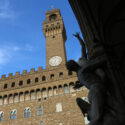The Whiskey Rebellion was a significant event in early American history, arising in response to a federal excise tax on distilled spirits, particularly whiskey.
The United States faced substantial war debt following the American Revolution. In 1791, Secretary of the Treasury Alexander Hamilton proposed an excise tax on distilled spirits to generate revenue and repay the debt.
The tax was particularly unpopular in the western frontier regions, including parts of Pennsylvania, Maryland, Virginia, and North Carolina. Many farmers in these areas relied on distilling surplus grain, often converting it into whiskey, which was more easily transportable and profitable.
The excise tax on distilled spirits was passed by Congress in 1791 and signed into law by President George Washington. Tax collectors, often called “revenuers,” were appointed to enforce the tax in affected regions.
Farmers and distillers in the affected regions strongly opposed the tax, viewing it as unfair and burdensome. Tensions escalated as tax collectors faced threats and intimidation, and some were even attacked.
In 1794, the situation escalated into violence in western Pennsylvania. The conflict peaked when a federal marshal arrived in western Pennsylvania to serve writs to individuals who had not paid the excise tax.
In response to the unrest, Washington was determined to assert federal authority and called for a militia to suppress the rebellion. A force of around 13,000 state militiamen, led by Washington, marched into the region.
The militia’s presence effectively quelled the rebellion without extensive bloodshed. Many of the rebellion’s leaders flee the area, avoiding confrontation.
The Whiskey Rebellion demonstrated the federal government’s willingness and ability to use force to maintain law and order, establishing the authority of the newly formed nation. It also fueled ongoing debates about taxation, representation, and the balance of power between the federal government and individual states.


